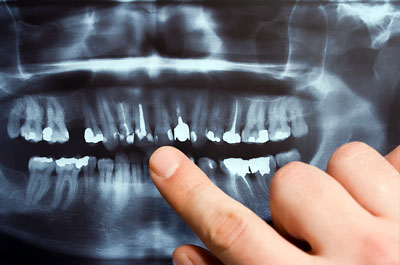 Needing wisdom teeth removal is a common problem many people face. Wisdom teeth often come in at a sideways angle and are impacted. Impacted wisdom teeth often stay underneath the gum line or just above it. This pushes on the other teeth in the mouth, and we will often recommend that you have wisdom teeth extraction surgery and remove them so they cannot continue to cause problems with the rest of your mouth. Impacted wisdom teeth are prone to pushing other teeth into a misaligned position, being slightly exposed and leading to infections or decay, or eventually causing you to have some distress. Once any of these things start happening, it is time to consider a wisdom teeth extraction from our West Roxbury dental office.
Needing wisdom teeth removal is a common problem many people face. Wisdom teeth often come in at a sideways angle and are impacted. Impacted wisdom teeth often stay underneath the gum line or just above it. This pushes on the other teeth in the mouth, and we will often recommend that you have wisdom teeth extraction surgery and remove them so they cannot continue to cause problems with the rest of your mouth. Impacted wisdom teeth are prone to pushing other teeth into a misaligned position, being slightly exposed and leading to infections or decay, or eventually causing you to have some distress. Once any of these things start happening, it is time to consider a wisdom teeth extraction from our West Roxbury dental office.
The wisdom teeth extraction procedure
A skilled oral surgeon will be the one to perform the wisdom teeth extraction. The process usually can be complete in the comfort of the dentist office and under the provisions of local anesthesia. Naturally, where and how we perform the wisdom teeth extraction depends on a few factors. These factors include the condition of the teeth themselves, how many teeth we need to remove and if there is a complication or infection. Typically, if the patient is having all the wisdom teeth extracted at the same time, we recommend that the patient has the procedure in the hospital. If there is an infection, the dentist will order antibiotics so the infection can be cleared up. We do not perform a wisdom teeth extraction surgery with an active infection. If the patient has an infection, then the patient can expect to have the process pushed back a few days.
On the day of the wisdom tooth extraction, it is best for the patient to not eat or drink for at least 12 hours before the process. While we can often do the procedure under a local anesthesia, there are times when a stronger general anesthesia may become necessary. We do not want the patient to have food in the digestive tract. General anesthesia will put the patient to sleep, making sure that he or she is unaware of any of the procedure. Once we are sure that the patient is asleep, the procedure for wisdom teeth extraction will begin.
To remove wisdom teeth, we will cut open the gum tissue and expose the tooth and bone. Any bone covering the tooth will also need to be removed. If the tooth is connected to the bone, we will remove the connecting tissues in order to remove the tooth itself. During a wisdom teeth extraction surgery, we often have to cut the tooth into smaller pieces to make it easier to remove. Once we remove all the pieces of the wisdom tooth, we will close up the opening with self-dissolving stitches. The stitches will dissolve after a couple of days.
Pain medication and gauze to place over the site will be prescribed by Fadi R Metri & Associates, and you can expect to have discomfort for a few days after your wisdom teeth have been removed.
Related Posts
Tooth Extraction FAQ: At What Age Do Wisdom Teeth Come In?
No one looks forward to tooth extraction, but sometimes it is necessary for a person's oral health. This is often the case with the last adult teeth to erupt, the wisdom teeth. …
Candy Is Delicious But Can Cause Dental Issues
Tooth extractions are a last resort but can become a possibility if the damage is too great. Tooth ExtractionWhile tooth extraction is not our first option for treating infected teeth, it may become necessary in certain …
What Are Impacted Wisdom Teeth?
Concerned about impacted wisdom teeth extraction? Read on to learn more about this condition and how it is addressed. The third pair of molars at the rear of the mouth is known …
When Pulling Wisdom Teeth Are Necessary
The process involves some recovery time but only takes a day. You'll end up with a painless smile. Wisdom Teeth ExtractionWisdom teeth extractions may become necessary when the third molars become impacted. The wisdom teeth can …
